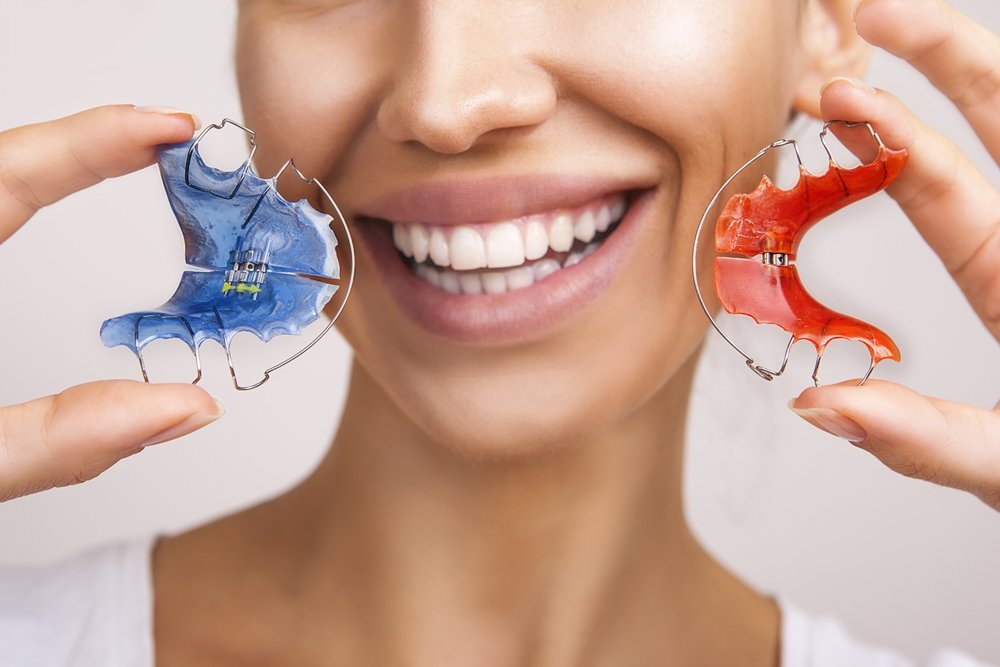The 3-Minute Rule for All Star Family Orthodontics
The 3-Minute Rule for All Star Family Orthodontics
Blog Article
The Facts About All Star Family Orthodontics Revealed
Table of ContentsThe Definitive Guide for All Star Family OrthodonticsAll Star Family Orthodontics Things To Know Before You Get ThisGet This Report about All Star Family OrthodonticsAll Star Family Orthodontics Fundamentals ExplainedThe Buzz on All Star Family Orthodontics

In addition, we use flexible therapy schedules, versatile repayment alternatives and a fun, pleasurable experience.
An orthodontist is a dental practitioner educated to diagnose, prevent, and deal with teeth and jaw irregularities. Orthodontists function with individuals of all ages, from youngsters to adults.
Malocclusion, or misaligned teeth, can cause dental problems, consisting of dental caries, gum tissue disease, and difficult or unpleasant eating. But not every person is born with straight teeth. If you have a bad bite or large spaces between your teeth, you may wish to seek advice from a dental practitioner focusing on orthodontic care.
All Star Family Orthodontics Can Be Fun For Anyone
(Image Credit History: DigitalVision/Getty Images) Orthodontists utilize taken care of and detachable dental gadgets, like dental braces, retainers, and bands, to transform the setting of teeth in your mouth. Orthodontic therapy is for dental abnormalities, including: Jagged teethBite troubles, like an overbite or an underbiteCrowded teeth or teeth that are too far apartJaw misalignmentThe goal of orthodontic treatment is to improve your bite.
While you may think of orthodontists as generally for kids or teens that require dental braces, they can deal with dental issues at any type of age. Orthodontists go to university, oral school, and orthodontic school.
, but not all dental practitioners are orthodontists. They concentrate on 2 locations: Just how to effectively and securely move teeth Just how to correctly lead growth in the teeth, jaw, and faceOnce an orthodontist has completed training, they have the option to end up being board accredited.
All Star Family Orthodontics Things To Know Before You Get This
Imbalance, or malocclusion, is one of the most usual reason people see an orthodontist. It is genetic and is the outcome of dimension differences in between the upper and lower jaw or in between the jaw and teeth. Malocclusion leads to tooth overcrowding, a misshapen jaw, or irregular bite patterns. Malocclusion is typically treated with: Your orthodontist affixes metal, ceramic, or plastic square bonds to your teeth.
If you have just small malocclusion, you may be able to utilize clear braces, called aligners, rather than typical braces. Some people need a headgear to help move teeth into line with pressure from outside the mouth. After dental braces or aligners, you'll require to put on a retainer. A retainer is a customized tool that keeps your teeth in area.
/assets/images/provider/photos/2686944.jpg)
You might need to see an orthodontist if you have: Crowding or not enough room for every one of your teethOverbite, when your top teeth come over your bottom teethUnderbite, when your bottom teeth are also much forwardSpacing or concerns with gapsCrossbite, which is when your top teeth fit behind your base teeth when your mouth is closedOpen bite or a vertical gap between your front bottom and upper teethMisplaced midline, when the center of your bottom and top teeth do not line up Fixing a dental malocclusion can: Make biting, chewing, and talking easierImprove the proportion of our face and your overall appearanceEase pain from temporomandibular joint conditionsSeparate your teeth and make them simpler to clean, aiding protect against dental caries or cavities It's frequently a dentist that first notifications misaligned teeth during a routine test.
The Basic Principles Of All Star Family Orthodontics
Throughout your first orthodontic assessment, you'll likely have: A dental examPhotos taken of your face and smileDental X-raysPanoramic (360 level) X-rays of your face and headImpressions to create molds of your teethThese examinations will certainly help your orthodontist recognize how to continue with your treatment. An orthodontist is a dental practitioner that's had training to treat your teeth and jaw.
Orthodontists are dental experts yet not all dental experts are orthodontists. Orthodontists are concentrated on your bite, or the method your teeth fit together, and the straightness of your teeth.

This initial assessment includes an aesthetic assessment of your teeth and bite, X-rays, and potentially even 3D scans. By thoroughly evaluating these aspects, the orthodontist can identify any imbalances, crowding, spacing issues, or jaw disparities. As soon as a clear picture is developed, the orthodontist will review personalized treatment alternatives. This conversation will certainly cover the type of dental braces or aligners advised (typical steel dental braces, clear aligners like Invisalign, and so on), the projected therapy period, and any type of prospective difficulties or adverse effects.
The Single Strategy To Use For All Star Family Orthodontics
While braces are the most typically acknowledged orthodontic treatment, orthodontists have a varied toolkit at their disposal. The details approach selected depends upon the intensity of the instance, the client's age, and individual preferences. These tried-and-true braces utilize a system of brackets bonded to the teeth and linked by cords.
Clear aligners, like Invisalign, are a prominent option for clients seeking an extra discreet therapy choice. These removable have a peek at these guys trays are personalized to considerably change the teeth's placement. Headgear may be used in conjunction with braces or aligners to apply added targeted pressures, especially for correcting jaw discrepancies. In situations of narrow jaws, palatal expanders can be made use of to develop space for correct tooth placement.
Report this page